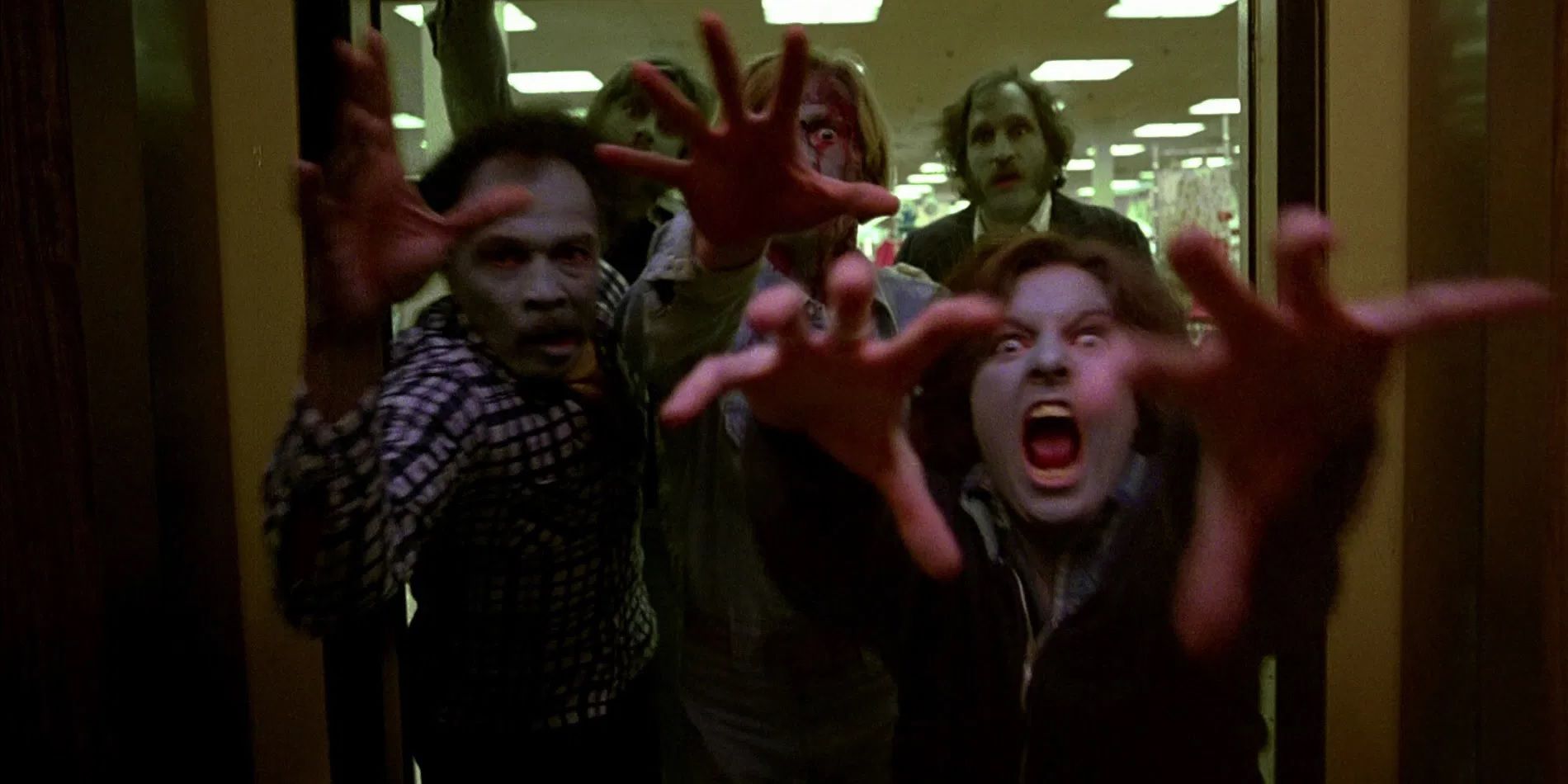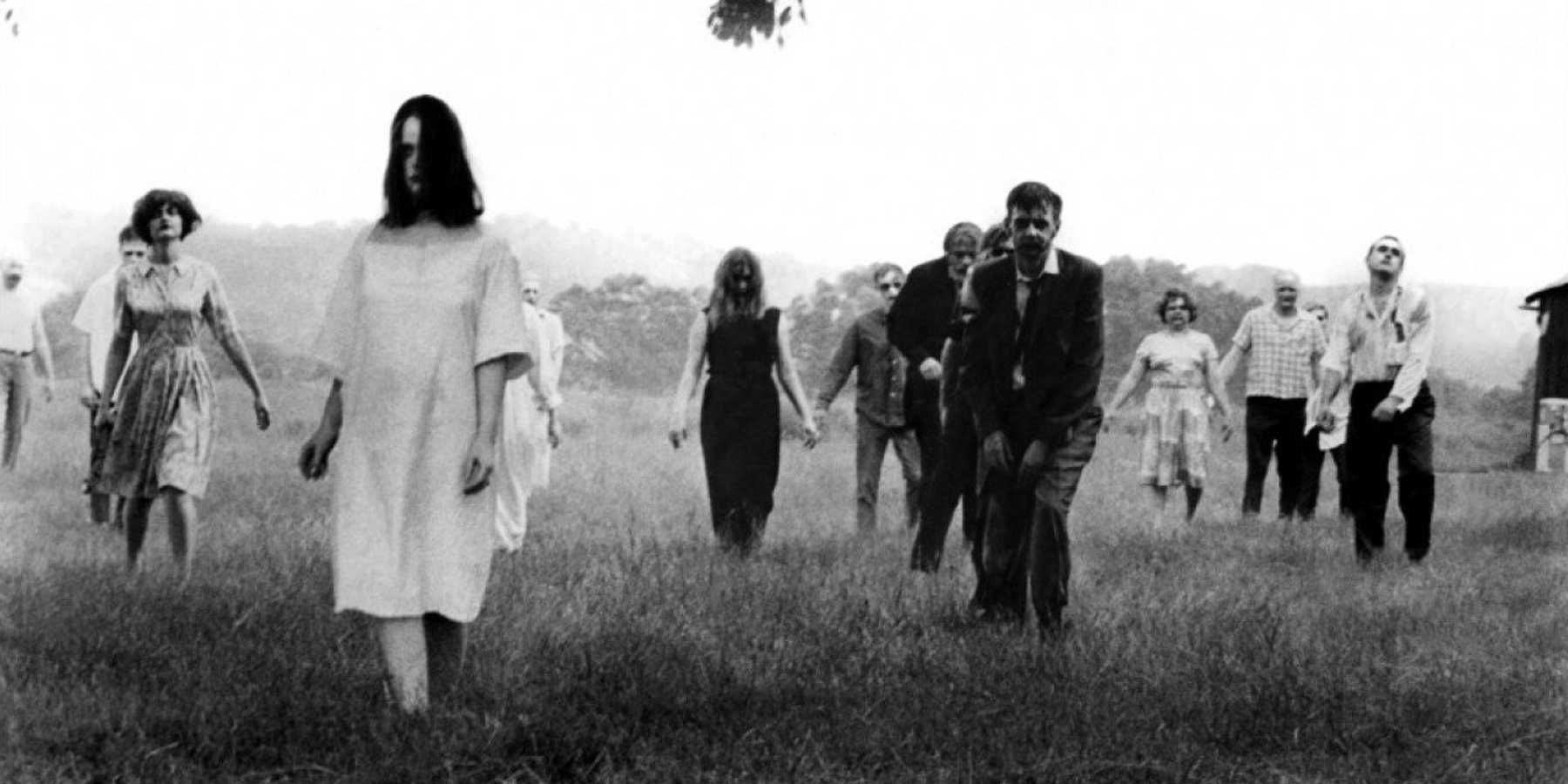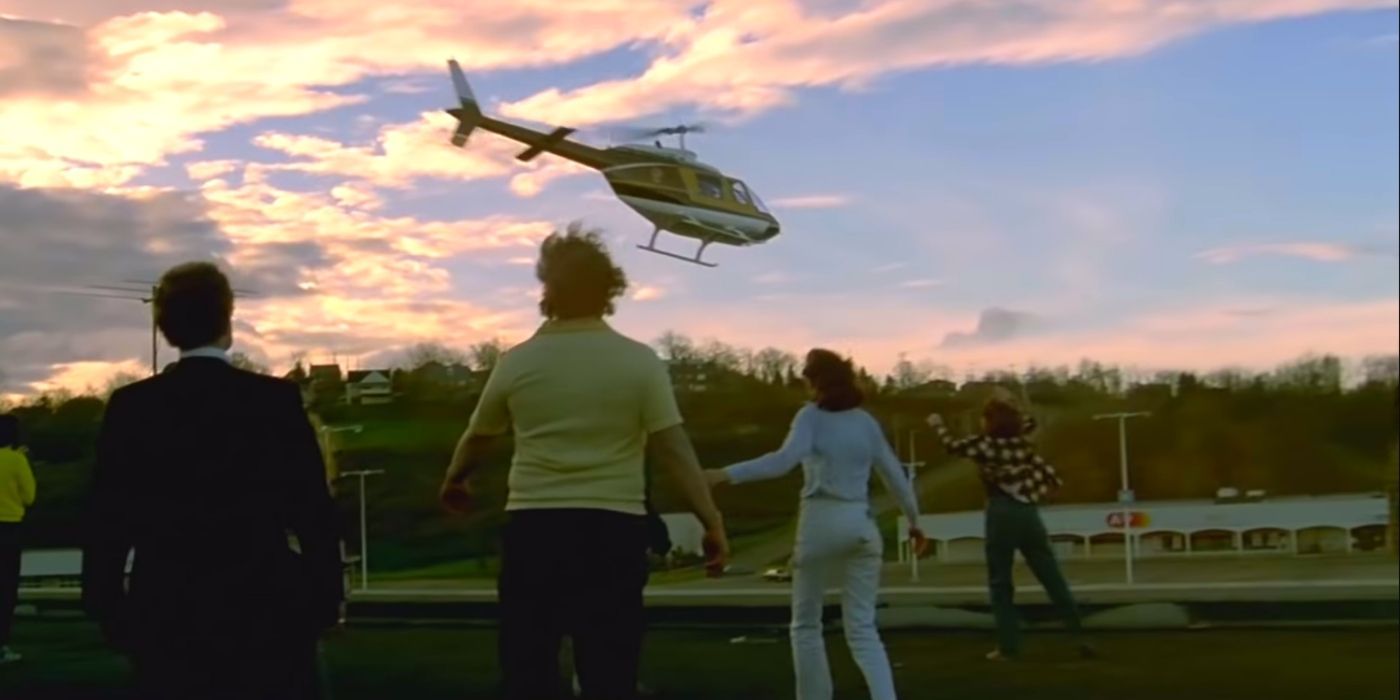Although the idea of the zombie dates back to Haitian slaves 300 years ago, George A. Romero is credited with creating the modern zombie. The idea of the zombie as we know it today – the undead rising from their graves, craving human flesh and brains – originated with Romero in his low-budget 1968 masterpiece Night of the Living Dead. A decade later, Romero solidified the zombie movie as its own subgenre with the spiritual sequel Dawn of the Dead.
While it’s not a direct sequel, Dawn of the Dead features the same zombie uprising seen in Night of the Living Dead and follows the same basic structure of a group of survivors banding together and holing up at a secluded location to wait for it to all blow over. The stage was set for other directors to start making their own zombie movies with this imitable bare-bones premise. Although the modern zombie movies inspired by Romero’s classics have copied the story template and the dawdling hordes of the flesh-eating undead, most of them have missed what really made Night of the Living Dead and Dawn of the Dead great: their social commentary.
Romero’s original zombie-infested classic, his directorial debut Night of the Living Dead, touched on a number of contemporary issues. It’s been read as an allegory for Cold War-era fears of nuclear attacks, but it’s more commonly described as a harrowing critique of racism. Romero noted that he didn’t intend to tackle racial themes in the movie and didn’t take race into account during casting, but the movie has nevertheless been praised as one of the preeminent horror films dealing with the terror of racism. The movie’s African-American hero, Ben (Duane Jones), defies the odds and manages to survive the night. But when he comes out of the basement to join the other survivors, he’s mistaken for a zombie by a trigger-happy white guy and shot dead. The film’s morbid final scene sees Ben’s corpse being thrown onto a bonfire as the survivors move on.
The director’s 1978 follow-up, Dawn of the Dead, is nowhere near as bleak and nihilistic, although it still has a cynical attitude toward its subtextual subject matter. In the second movie, Romero swapped out allegorizing racism for pointedly satirizing consumerism. In Dawn of the Dead, he used his hordes of zombies to critique an American populous that was flocking to corporate-branded stores to stimulate the capitalist economy. Whereas Night of the Living Dead took place on an isolated farm in the middle of nowhere, Dawn of the Dead takes place in a typical U.S. city. Instead of hiding out in a farmhouse, the survivors go to the mall.
The crowds of zombies flooding into the mall were used to hold a mirror up to society, but Romero took his satire a step further than simply filling the movie with obvious visual metaphors. Dawn of the Dead uses its post-apocalyptic setting to comment on the meaninglessness of money altogether. Despite the fact that America is crawling with the undead, the government is no more, and therefore currency is now worthless, the survivors still empty out the cash registers in the mall and fill their pockets.
Horror cinema has always been a great prism through which to explore social issues. Roman Polanski used the title character’s paranoia in Rosemary’s Baby to comment on women’s liberation. Tobe Hooper used the irony of Sally and her friends being slaughtered for meat to turn The Texas Chainsaw Massacre into the ultimate pro-vegetarian film. In recent years, Jordan Peele has revived the “social thriller” subgenre with his movies Get Out and Us. Even Romero’s non-zombie movies, like his anti-establishment post-Watergate chiller The Crazies, heavily featured allegorical themes.
There have been a few recent zombie movies that held up Romero’s tradition of using the undead as a platform for social commentary. In the 2016 gem Train to Busan, one of the genre’s all-time greatest entries, the lead protagonist is an unscrupulous businessman who slowly comes to realize that the corners cut by his own corporate greed may have kickstarted the zombie apocalypse. However, these socially conscious zombie movies are a rarity these days. They’re exceptions, as opposed to the norm.
Recent zombie movies that have stood out have done so because they mixed in another genre to shake things up, like Zombieland or Warm Bodies, and not because they’ve had something profound to say like Romero’s masterpieces did. World War Z dealt with the geopolitical response to a zombie outbreak, which was an intriguing foundation, but the final product is too busy being an all-out action blockbuster to even make its zombies scary, let alone make them a satirical statement about the contemporary social climate.
With everything that’s going on in the world right now, the big screen needs social commentary more than ever. During difficult times in the past, movies have helped to make sense of a world riddled with uncertainty. Cinema was revolutionized on a global scale after World War II. The Watergate scandal invigorated the New Hollywood movement. The age of doomscrolling needs a zombie movie that reflects its particular sociological eccentricities.



